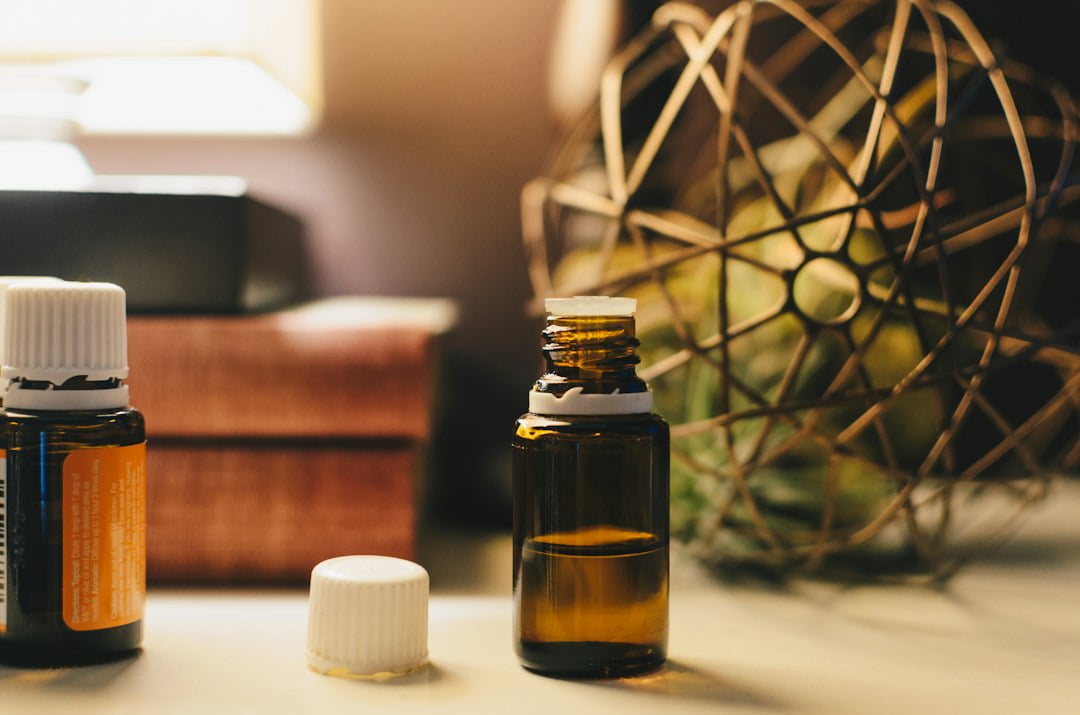
Moving with Ease: Incorporating Physical and Joint Health Practices for Optimal Movement
Physical and joint health are essential aspects of overall well-being. Taking care of our bodies and ensuring that our joints are healthy and functioning properly can greatly improve our quality of life. In this blog post, we will explore the importance of physical and joint health, the benefits of regular exercise, finding the right exercise routine, proper stretching and warm-up techniques, maintaining joint mobility and flexibility, incorporating low-impact exercises, the role of nutrition in physical and joint health, managing pain and discomfort, and staying motivated to prioritize physical and joint health.
Key Takeaways
- Physical health is important for overall well-being and quality of life.
- Regular exercise has numerous benefits, including improved cardiovascular health, increased strength and flexibility, and reduced risk of chronic diseases.
- Finding the right exercise routine for your body and goals is crucial for success and injury prevention.
- Proper stretching and warm-up can help prevent injury and improve performance.
- Nutrition plays a key role in physical and joint health, and managing pain and discomfort is important for long-term success.
Understanding the Importance of Physical Health
Physical health plays a crucial role in our overall well-being. When we are physically healthy, we have more energy, feel better mentally and emotionally, and are better equipped to handle the challenges of daily life. Additionally, physical health is closely linked to joint health. Our joints are responsible for allowing movement and providing support to our bodies. When we neglect our physical health, it can lead to joint problems such as stiffness, pain, and reduced mobility.
The Benefits of Regular Exercise
Regular exercise offers numerous benefits for both physical and joint health. Firstly, exercise helps to strengthen muscles, which in turn provides support to our joints. Strong muscles help to stabilize the joints and reduce the risk of injury. Exercise also helps to improve flexibility and range of motion in the joints, allowing for better mobility. Furthermore, exercise promotes the production of synovial fluid, which lubricates the joints and reduces friction during movement. This can help to alleviate joint pain and discomfort.
In addition to its impact on joint health, regular exercise has a multitude of other benefits. It can help to maintain a healthy weight, reduce the risk of chronic diseases such as heart disease and diabetes, improve cardiovascular health, boost mood and mental well-being, enhance cognitive function, and increase energy levels.
Finding the Right Exercise Routine for You
| Exercise Type | Benefits | Frequency | Intensity | Duration |
|---|---|---|---|---|
| Cardiovascular | Improves heart health, burns calories, reduces stress | 3-5 times per week | Moderate to high | 30-60 minutes |
| Strength Training | Builds muscle, increases metabolism, improves bone density | 2-3 times per week | High | 30-60 minutes |
| Flexibility | Improves range of motion, reduces risk of injury, reduces stress | 2-3 times per week | Low to moderate | 10-30 minutes |
| Balance | Reduces risk of falls, improves posture, improves coordination | 2-3 times per week | Low to moderate | 10-30 minutes |
Finding an exercise routine that works for you is crucial for long-term adherence and success. It’s important to choose activities that you enjoy and that align with your interests and preferences. This will make it more likely that you will stick to your routine and make exercise a regular part of your life. Consider trying different types of exercises such as walking, swimming, cycling, yoga, or strength training to find what suits you best.
It’s also important to consider your current fitness level and any physical limitations or health conditions you may have. If you are new to exercise or have any concerns, it may be beneficial to consult with a healthcare professional or a certified fitness trainer who can provide guidance and help you develop a safe and effective exercise routine.
Tips for Proper Stretching and Warm-Up
Before engaging in any physical activity, it is essential to properly stretch and warm up your muscles and joints. Stretching helps to improve flexibility, increase range of motion, and reduce the risk of injury. It is important to stretch all major muscle groups, including the legs, arms, back, and neck. Hold each stretch for 15-30 seconds and repeat on both sides of the body.
In addition to stretching, a proper warm-up is crucial to prepare your body for exercise. A warm-up should consist of light aerobic activity such as brisk walking or jogging for 5-10 minutes. This helps to increase blood flow to the muscles, raise body temperature, and loosen up the joints. It is also important to gradually increase the intensity of your exercise during the warm-up phase.
Joint Health: Maintaining Mobility and Flexibility

Maintaining joint mobility and flexibility is essential for overall physical health. Regular exercise plays a key role in achieving this. When we engage in physical activity, our joints move through their full range of motion, which helps to maintain flexibility. Exercise also helps to strengthen the muscles surrounding the joints, providing support and stability. This can help to prevent joint injuries and reduce the risk of developing conditions such as arthritis.
Incorporating exercises that target joint mobility and flexibility into your routine is important. Activities such as yoga, Pilates, and tai chi are particularly beneficial for improving joint health. These exercises focus on gentle movements and stretching, which can help to increase flexibility, reduce stiffness, and improve overall joint function.
Incorporating Low-Impact Exercises for Joint Health
Low-impact exercises are a great option for individuals who want to prioritize joint health or who may have joint issues or injuries. These exercises put less stress on the joints compared to high-impact activities such as running or jumping. Low-impact exercises can still provide a great workout while minimizing the risk of joint pain or injury.
Examples of low-impact exercises include swimming, cycling, using an elliptical machine, walking, and low-impact aerobics. These activities help to improve cardiovascular fitness, strengthen muscles, and promote joint health without placing excessive strain on the joints. It’s important to listen to your body and choose activities that feel comfortable and do not exacerbate any existing joint issues.
The Role of Nutrition in Physical and Joint Health
Nutrition plays a vital role in maintaining physical and joint health. A healthy diet provides the necessary nutrients for optimal body function, including the health of our joints. Consuming a balanced diet that includes a variety of fruits, vegetables, whole grains, lean proteins, and healthy fats can help to support joint health.
Certain nutrients are particularly important for joint health. Omega-3 fatty acids found in fatty fish such as salmon and sardines have anti-inflammatory properties that can help to reduce joint pain and inflammation. Vitamin C is essential for collagen production, which is important for maintaining the structure of our joints. Foods rich in vitamin C include citrus fruits, strawberries, bell peppers, and broccoli. Calcium and vitamin D are also important for bone health, which indirectly affects joint health.
Managing Pain and Discomfort
Joint pain and discomfort can be caused by a variety of factors, including injury, overuse, arthritis, or other underlying conditions. It is important to listen to your body and seek medical advice if you experience persistent or severe joint pain. However, there are some strategies that can help to manage pain and discomfort on a day-to-day basis.
Applying ice or heat to the affected joint can help to reduce inflammation and alleviate pain. Ice is particularly effective for acute injuries or sudden flare-ups, while heat can be beneficial for chronic conditions or stiffness. Over-the-counter pain relievers such as nonsteroidal anti-inflammatory drugs (NSAIDs) can also provide temporary relief. However, it is important to use these medications as directed and consult with a healthcare professional if you have any concerns.
Staying Motivated: Setting Realistic Goals and Tracking Progress
Staying motivated to prioritize physical and joint health can sometimes be challenging. Setting realistic goals and tracking your progress can help to keep you motivated and accountable. Start by setting small, achievable goals that are specific, measurable, attainable, relevant, and time-bound (SMART). For example, your goal could be to walk for 30 minutes three times a week or to complete a certain number of strength training exercises each week.
Tracking your progress can also be motivating. Keep a journal or use a fitness app to record your workouts, track your steps, or monitor your progress towards your goals. Celebrate your achievements along the way and don’t be too hard on yourself if you have setbacks. Remember that consistency is key and that every small step towards better physical and joint health is valuable.
Prioritizing physical and joint health is essential for overall well-being. Regular exercise, proper stretching and warm-up techniques, maintaining joint mobility and flexibility, incorporating low-impact exercises, following a healthy diet, managing pain and discomfort, and staying motivated are all important aspects of maintaining physical and joint health. By taking care of our bodies and making these practices a regular part of our lives, we can improve our quality of life and enjoy the benefits of optimal physical and joint health.
FAQs
What is physical health?
Physical health refers to the overall well-being of an individual’s body, including their ability to perform daily activities without experiencing fatigue or pain.
What is joint health?
Joint health refers to the condition of the joints in the body, including their ability to move freely and without pain.
What are some practices for better physical health?
Practices for better physical health include regular exercise, a balanced diet, getting enough sleep, and avoiding harmful substances such as tobacco and excessive alcohol.
What are some practices for better joint health?
Practices for better joint health include maintaining a healthy weight, engaging in low-impact exercise, stretching regularly, and avoiding repetitive motions that can cause strain on the joints.
What are some common joint problems?
Common joint problems include arthritis, bursitis, tendinitis, and joint dislocation.
How can joint problems be prevented?
Joint problems can be prevented by maintaining a healthy weight, engaging in low-impact exercise, stretching regularly, and avoiding repetitive motions that can cause strain on the joints.
What are some treatments for joint problems?
Treatments for joint problems may include medication, physical therapy, surgery, or a combination of these approaches.


















